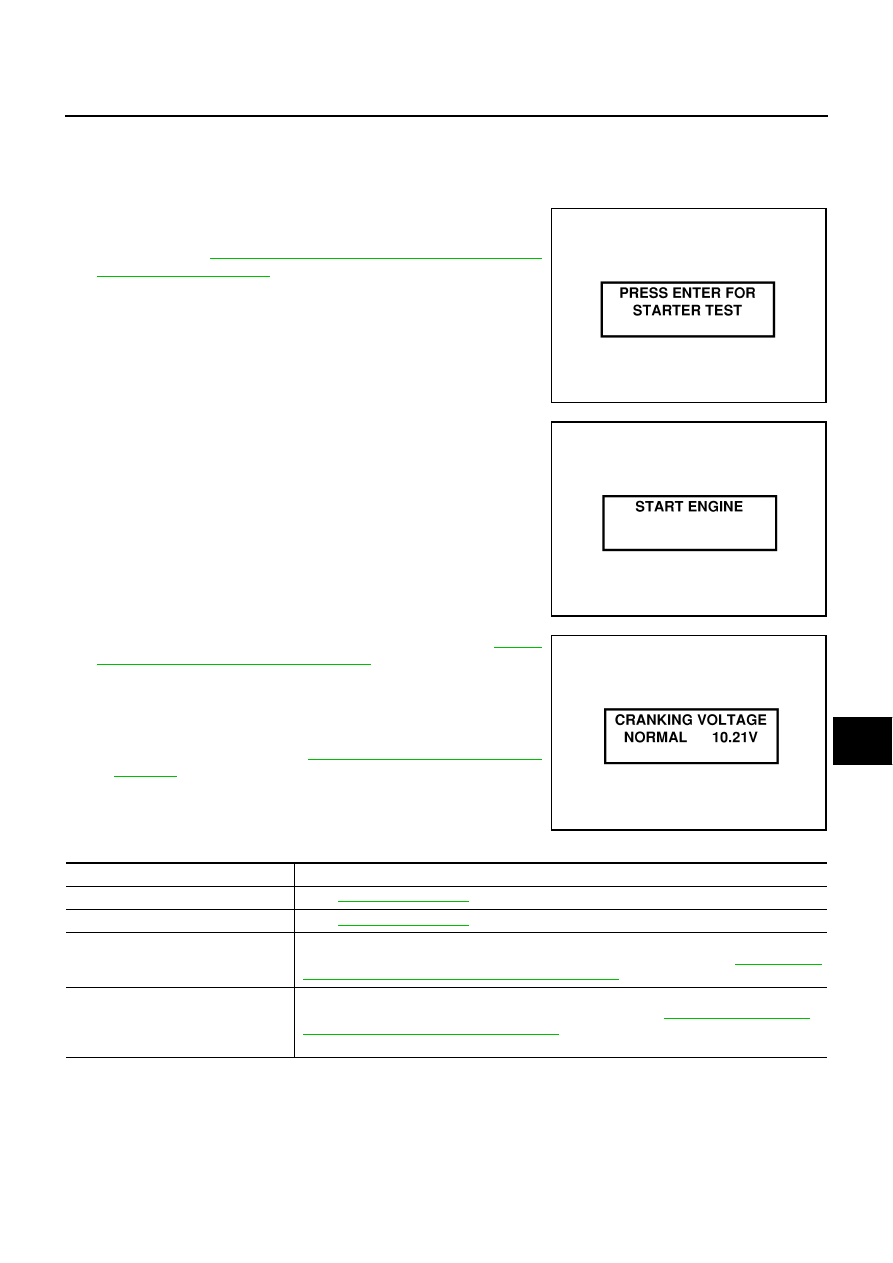Nissan Murano Z50 (2004 year). Manual - part 204

STARTING SYSTEM
SC-11
C
D
E
F
G
H
I
J
L
M
A
B
SC
Revision: 2004 November
2004 Murano
Trouble Diagnosis with Battery/Starting/Charging System Tester
AKS004F1
NOTE:
To ensure a complete and thorough diagnosis, the battery, starter and alternator test segments must be done
as a set from start to finish.
1.
Turn off all loads on the vehicle electrical system.
2.
Perform battery test with Battery/Starting/Charging system
tester. Refer to
SC-6, "Trouble Diagnosis with Battery/Starting/
.
3.
Press “ENTER” to begin the starting system test.
4.
Start the engine.
5.
Diagnosis result is displayed on the tester. Refer to
"DIAGNOSTIC RESULT ITEM CHART"
.
NOTE:
●
If the starter performs normally but the engine does not start,
perform engine diagnosis.
●
For intermittent “NO CRANK” or “NO STARTER OPERA-
TION” incidents, refer to
.
DIAGNOSTIC RESULT ITEM CHART
SEL408X
SEL409X
SEL410X
Diagnostic item
Service procedure
CRANKING VOLTAGE NORMAL
Go to
CRANKING VOLTAGE LOW
Go to
CHARGE BATTERY
Perform the slow battery charging procedure. (Initial rate of charge is 10A for 12 hours.) Per-
form battery test again with Battery/Starting/Charging system tester. Refer to
Diagnosis with Battery/Starting/Charging System Tester"
.
REPLACE BATTERY
Before replacing battery, clean the battery cable clamps and battery posts. Perform battery
test again with Battery/Starting/Charging system tester. Refer to
with Battery/Starting/Charging System Tester"
. If second test result is “REPLACE BAT-
TERY”, then do so. Perform battery test again to confirm repair.